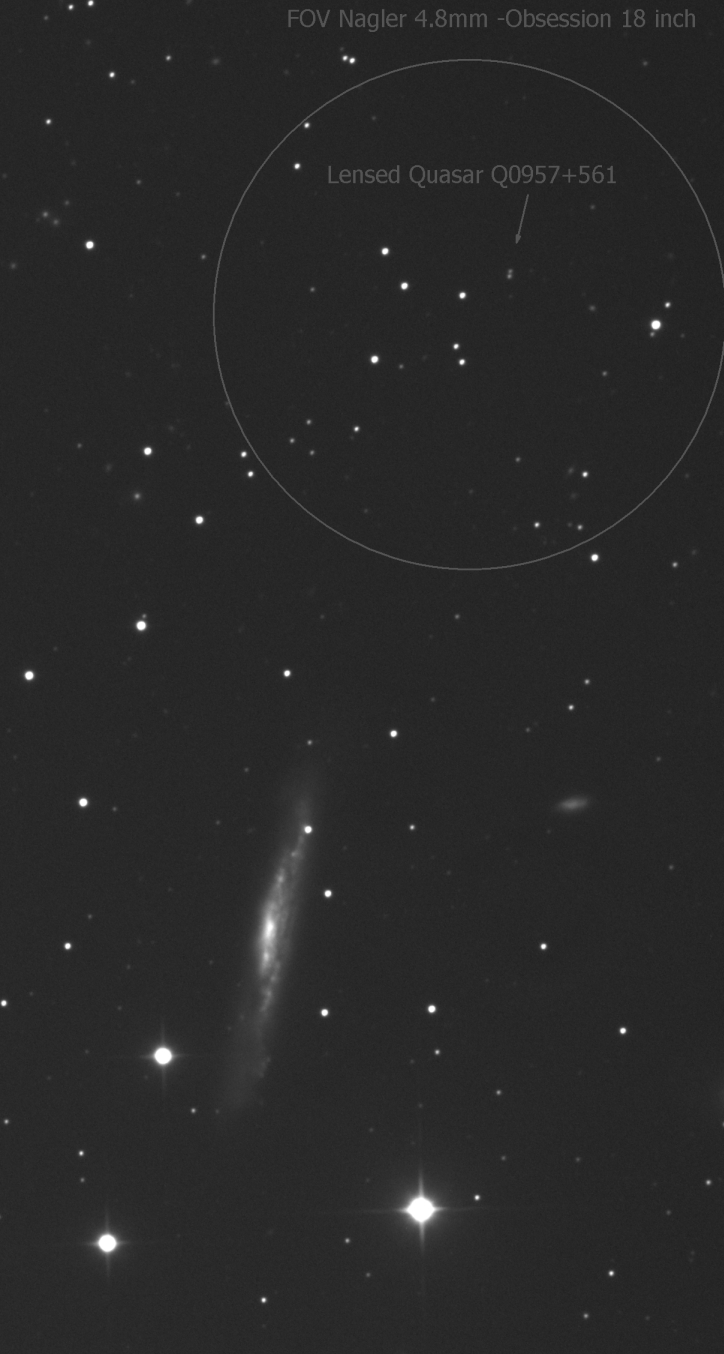







This field contains the bright galaxy NGC 3079 in Ursa Major along with the 17th mag
lensed double quasar Q0957+561. The quasar is over 7 billion light years away at a
redshift of 1.41, with a separation of only 6 arc seconds between the mirrored images.
The tiny pair of dots is one of a few known gravitationally-lensed quasars. The source is
actually a single quasar over 7 billion light years away. The light from this object passes
around a giant elliptical background galaxy (not visible) with redshift 0.36 or 3.9 billion
light years away. This close encounter causes the light to bend and form into two
separate images as shown above. Quasars are the most luminous known objects in the
universe. They are thought to be the high-energy cores of distant active galaxies, with
their energy provided by matter-energy conversion as matter is sucked into giant black
holes.
This quasar is easy to find since it lies just a few arc minutes North of bright galaxy
NGC 3079.
Processing information:
Date: Apr 2, 2014
Location: New Ringgold PA
Optics: Hyperion f/8 12.5 inch, FL 2540 mm
Mount: Paramount ME
Camera: SBIG STL11000
Exposure: LRGB: L:4x10min for a total of 40 minutes
Processing: Image acquisition using CCD Autopilot. Initial processing was done using
Maxim DL with subsequent processing with Photoshop.
Blue Mountain Vista Observatory New RInggold PA
NGC 3079 and nearby Lensed Quasar Q0957+561

